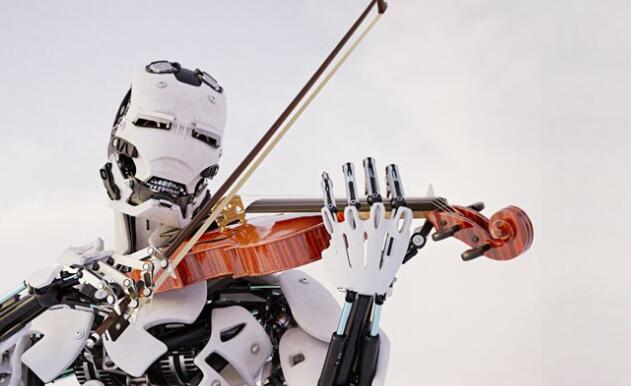
Content creation has evolved significantly, with artificial intelligence playing an increasingly prominent role. One area where AI is revolutionizing content creation is content detection. AI-powered content detection tools are transforming how we identify and address issues such as plagiarism, enabling a more efficient and accurate content creation process. This article explores the concept of the human-AI collaboration in content creation and how AI content detection is redefining the landscape.
The Rise of AI Content Detection
The Growing Concern of Plagiarism
Plagiarism is a persistent issue in the digital realm, affecting academia, journalism, and various content-creation industries. According to a study by Plagiarism.org, approximately 58% of students admitted to plagiarizing content from the internet. The rise of online content and easy access to information has made it easier for individuals to copy and paste without proper attribution.
The Role of AI in Content Detection
AI content detection tools leverage machine learning algorithms and natural language processing techniques to analyze and compare text, ensuring originality and identifying potential instances of plagiarism. These tools can detect similarities between documents, identify paraphrased content, and even recognize patterns indicative of AI-generated text.

The Benefits of Human-AI Collaboration in Content Creation
Enhanced Efficiency and Accuracy
AI content detection tools significantly improve the efficiency and accuracy of plagiarism detection. These tools can scan large volumes of text in a fraction of the time it would take a human to do the same task manually. Additionally, AI algorithms can detect subtle similarities and paraphrased content that may go unnoticed by human eyes.
Empowering Content Creators
AI content detection tools empower content creators by providing real-time feedback on the originality and uniqueness of their work. This allows creators to make necessary revisions and ensure their content meets the highest standards of integrity. By leveraging AI technology, content creators can focus more on the creative aspects of their work, knowing that AI algorithms are there to support them in maintaining originality.
Educating and Guiding Writers
AI content detection tools also serve as educational resources, helping writers understand proper citation practices, attribution, and paraphrasing techniques. These tools can provide insights into potential instances of unintentional plagiarism, guiding writers to improve their writing skills and ethical practices.
The Role of Humans in the Collaboration
While AI content detection tools offer immense value, it is important to recognize the essential role of human judgment and expertise in the content creation process. AI algorithms may excel at pattern recognition and data analysis, but they lack humans’ contextual understanding, creativity, and critical thinking abilities. The human element is crucial in interpreting the results generated by AI tools, making informed decisions, and adding a unique perspective to content creation.

Ethical Considerations in Human-AI Collaboration
As we embrace the collaboration between humans and AI in content creation, it is vital to address ethical considerations. Transparency and accountability should be prioritized to ensure the responsible use of AI content detection tools. Data privacy, consent, and fair use of content are critical aspects that need to be upheld. Additionally, continuous monitoring and evaluation of AI algorithms are necessary to identify and mitigate any biases that may inadvertently affect the content detection process.
The Future of Human-AI Collaboration
The future of human-AI collaboration in content creation is promising. Here are a few key trends and possibilities to consider:
Continuous Improvement of AI Algorithms
AI content detection algorithms will continue to evolve and improve, enhancing their ability to detect even the most sophisticated forms of plagiarism. Ongoing research and development will refine the algorithms, yielding more accurate results and reducing false positives.
Customization and Adaptability
Customization and adaptability will be key focus areas for AI content detection tools. As content creators have unique requirements and preferences, AI algorithms will become more customizable to cater to individual needs. This customization may include adjusting sensitivity levels, defining specific criteria for plagiarism detection, and incorporating industry-specific guidelines.
Integration with Content Creation Platforms
AI content detection tools will likely be integrated directly into popular content creation platforms to streamline the content creation process. This integration will enable real-time scanning and feedback, empowering content creators to ensure originality without needing external tools or processes.
Multilingual and Cross-platform Capabilities
As content creation becomes increasingly global, AI content detection tools will expand their capabilities to support multiple languages and platforms. The ability to analyze content in different languages and across different platforms will be crucial in maintaining integrity and originality across diverse content landscapes.
Enhanced Collaboration and Feedback Mechanisms
AI-powered content detection tools will facilitate collaboration between content creators, editors, and reviewers. These tools will offer seamless sharing and commenting functionalities, allowing stakeholders to provide feedback and suggestions within the content creation platform. Such collaboration mechanisms will streamline the review process and ensure that content meets the desired standards.
The human-AI collaboration in content creation is reshaping how we approach originality and plagiarism detection. AI content detection tools offer efficiency, accuracy, and valuable insights for content creators, empowering them to produce high-quality, original content. However, it is essential to balance AI automation and human judgment, recognizing both parties’ unique capabilities and ethical considerations. With the continuous advancement of AI algorithms and the integration of these tools into content creation platforms, the future of AI content detection holds immense potential for enhancing productivity and ensuring originality in the digital age.



